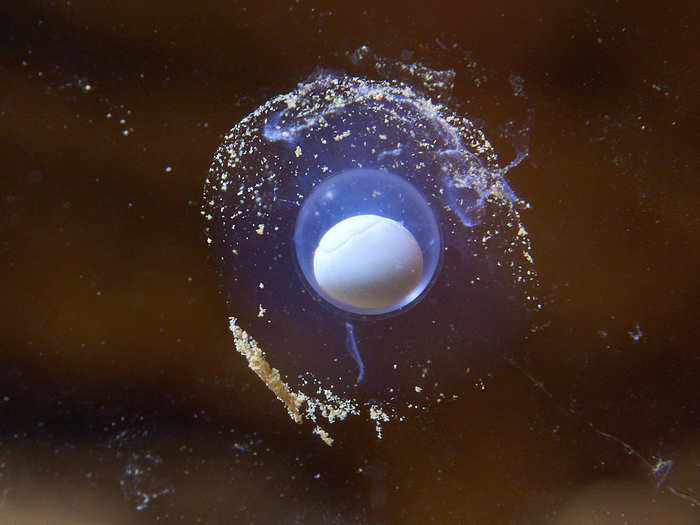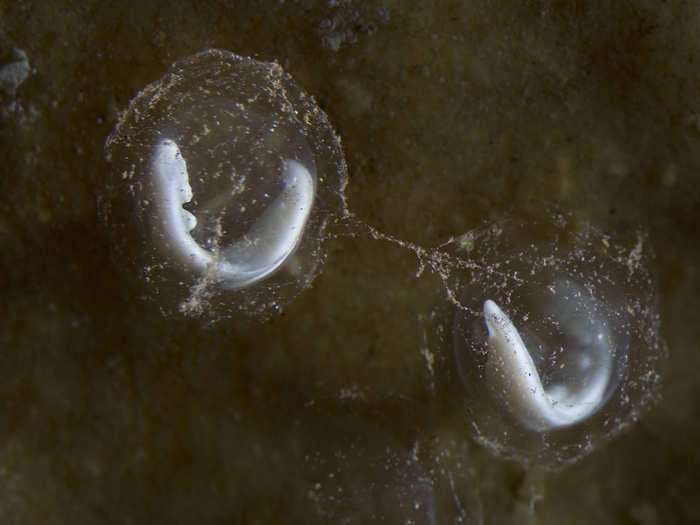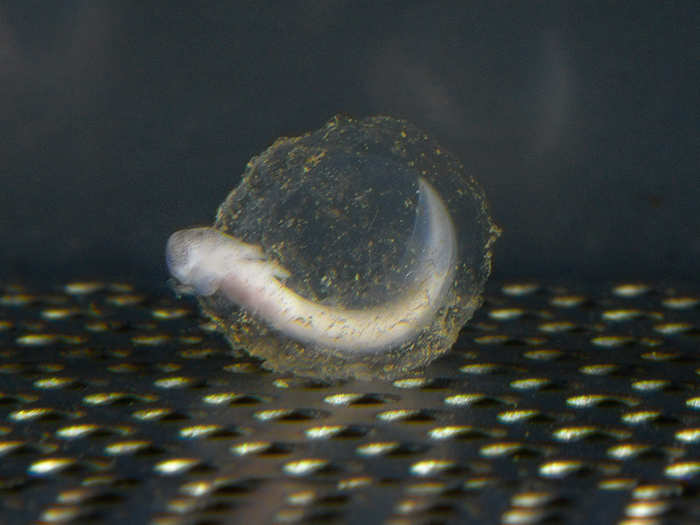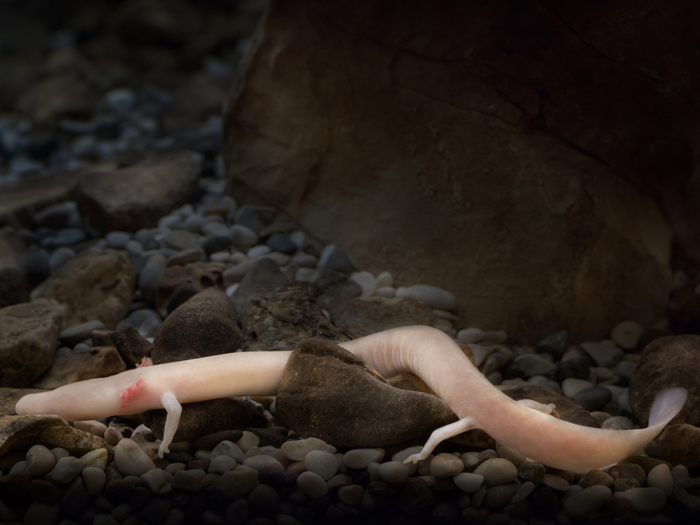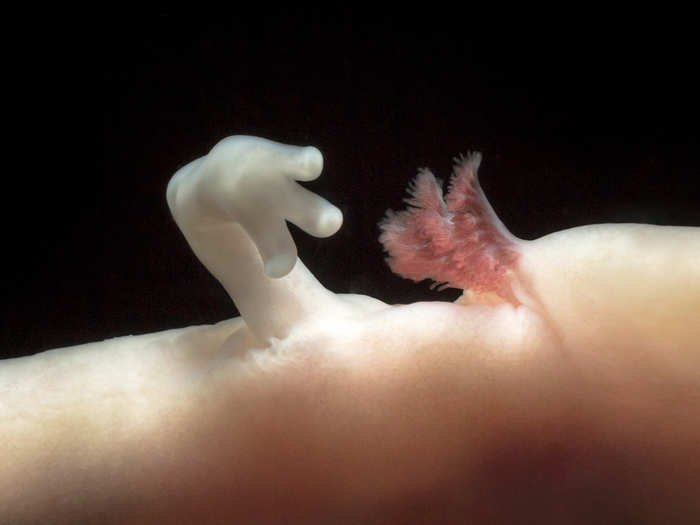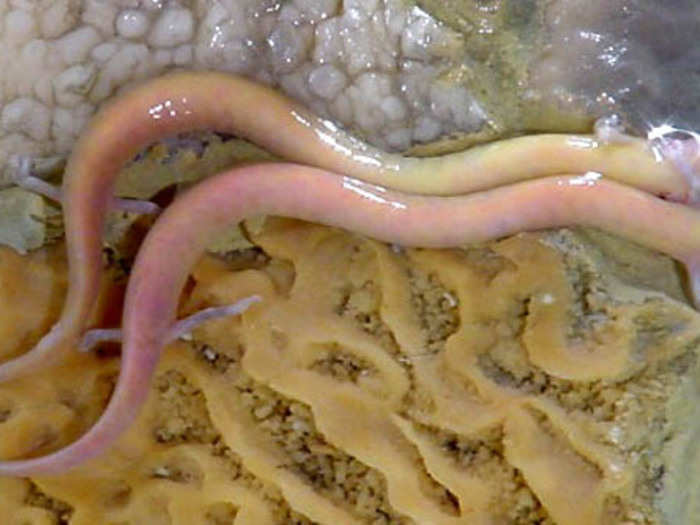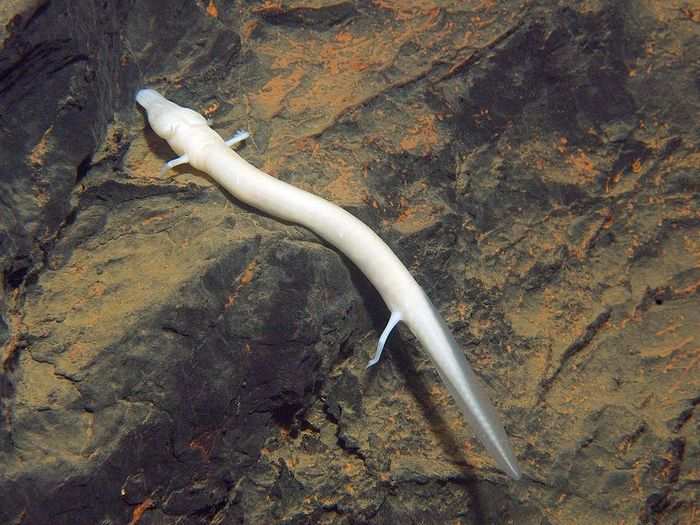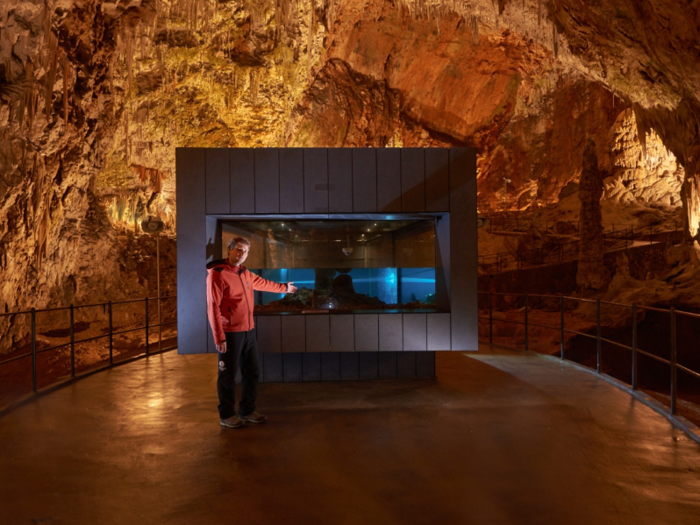It takes an olm longer to develop to sexual maturity than a human. In fact, baby dragons typically can't reproduce until 16 years after they're born. Even then, they never really grow up.
OIms have feathery gills at birth and keep them for the rest of their lives, which can last 100 years — making them the longest-lived amphibians biologists have found. This also means the baby dragons hatching now will look that way for the next century, with one notable exception: olm larvae eyes get covered with skin in adulthood.
Compensating for their skin-covered eyes, olms have the ability to sense much more than we can. And it's not just super-smell and hearing: They can also sense electricity and possibly even magnetic fields.

